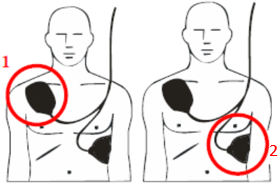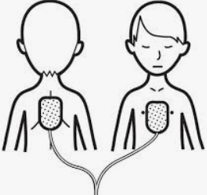Pre-hospital emergency services
What to do in an emergency requiring an ambulance
In Quebec, providing assistance to a person who needs urgent intervention is an obligation under the Charte des droits et libertés de la personne (in French only). Any person at the scene of an emergency becomes a first responder and must act quickly.
Call 911
Here are some instructions to follow when you call:
- Stay calm.
- Say that you need an ambulance.
- Stay as close as possible to the person in distress.
- Answer questions and follow the instructions you are given.
- Stay on the line and only hang up when told to do so.
Answer the medical dispatcher's questions and follow their instructions
The person who answers your 911 call, the medical dispatcher, will ask you the following questions to assess your needs and determine the resources required:
- What address are we sending the ambulance to?
- What telephone number are you calling from?
- What happened exactly?
- Who is the person in distress?
- How old are they?
- Is it a man or a woman?
- What is the condition of the person in distress?
- Are they conscious?
- Are they breathing?
Answer the questions as clearly as possible so that the dispatcher can assess the seriousness of the situation and determine the priority of your call relative to all those received. 911 calls must be triaged, just as triage is done in a hospital emergency room.
Regardless of the reason for the 911 call, the ambulance will not be able to help a person if their location is not known. The emergency medical dispatcher will insist on obtaining and having you repeat, if necessary, the address of the place the ambulance has to go to.
In the event of an error or difficulty finding the place, the emergency medical dispatcher may need to contact you again quickly. Therefore, the telephone number you provide is important. Remember, however, that you must stay on the line with the dispatcher until they tell you to hang up.
During the call, the dispatcher will tell you what to do. Follow the instructions given by telephone until the paramedics take charge of the person in distress.
Wait for the ambulance
Here are some things you can do while you are waiting for the ambulance to arrive:
- Make sure access is clear by clearing the stairs and the hall.
- Make sure your address (house number) is clearly visible.
- If possible, send someone to show the paramedics the way when they arrive.
- Shut pets away.
- Get the patient's health insurance card and hospital card out, if any.
- Collect the patient's medication, if any.
- Contact 911 again if the patient's condition changes.
Steps to take during a cardiac arrest
Anyone can help improve the survival rate during a cardiac arrest.
The survival rate following a cardiac arrest is increased if the following series of actions, called the chain of survival by Heart & Stroke Foundation, are performed in order:
- Quickly recognize the signs of cardiac. In this case, the person:
- is not conscious;
- does not respond;
- is not breathing or is not breathing normally.
- Call 911.
- Ask someone to find an automated external defibrillator (AED) quickly.
To find the location of the nearest AED, download the AED-Quebecapplication.
- Immediately begin early and quality cardiac massage (cardiopulmonary resuscitation (CPR)).
- Use the AED if a device is available near you.
- Let people from the pre-hospital chain of care look after the person.
- Let the hospital professionals continue to provide post–cardiac arrest care.
Watch the video
Disclaimer: the video player is YouTube’s and may have some accessibility barriers. You can skip to the content after the video
Disclaimer: the video player is YouTube’s and may have some accessibility barriers. You can skip to the content before the video.
2. Remove the victim’s clothing and stick on the defibrillation electrodes by following the instructions on them.

For adults, place an electrode below the right shoulder bone (right clavicle), then the 2nd electrode below the left armpit at breast level. Do not place an electrode on a transdermal patch or cardiac pacemaker.

For children, place an electrode in the middle of the chest, between the breasts, and then the 2nd electrode in the middle of the back, between the shoulder blades.
If AED is used immediately to help a victim of cardiac arrest, especially in the first 5 to 10 minutes, the chances of survival are increased. When the heart’s electrical system is disorganized, the only treatment available is to use an AED to synchronize the heart’s electrical activity. This action is vital in the chain of survival.
You are protected by the law when you use an AED.
See also
Last update: April 4, 2023


